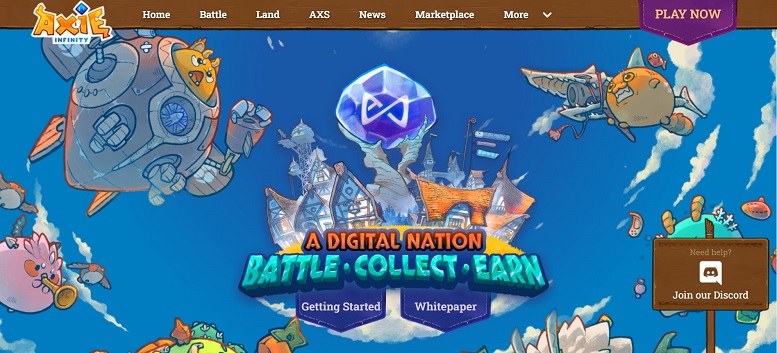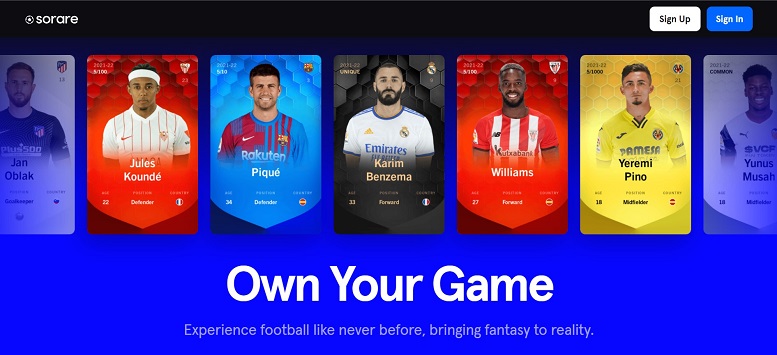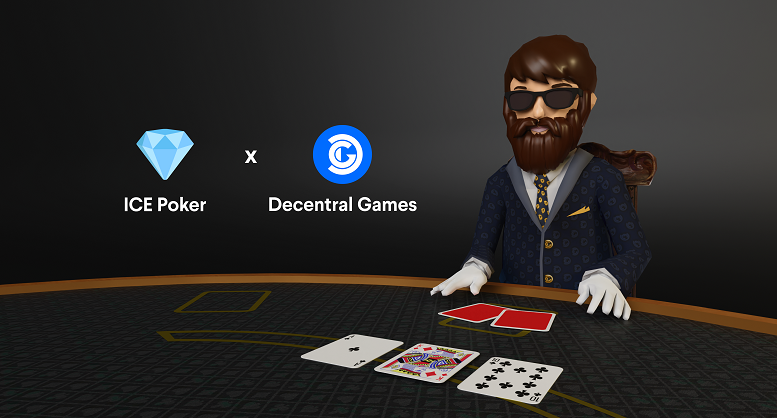Last week, my fantasy football team earned me 0.01 ETH, or roughly USD 39.
It’s an online game that’s found the sweet spot between my multiple interests: sports, making money, and crypto.
I now spend a couple of (fun!) hours a week researching football stats, tinkering around with my team, and strategizing how I’m gonna buy my next Liverpool FC NFT.
In a locked-down world, Blockchain + NFT gaming became my muse. I think we’re on the cusp of something magical, so I’ve dived in and done some exploring.
Here are valuable things I’ve learned from my adventures.
From Pay-to-Play to Play-to-Earn Games
When I was growing up, you had to pay to play computer games (legally). Yes, I know that sounds a little odd today, because we live in a world of free apps.
We’ve gotten used to this modern version of gaming: You get to play the game for free, but if you wanna access premium features (e.g. buying a tuxedo for your game hero), you pay.
The newest trend in gaming completely flips this around. Instead of paying to play games, you play games to earn money. Sure sounds like a gamer’s dream, but is it too good to be true?
Last year, this CoinDesk article thrust “Play-to-Earn” gaming into the media spotlight. In it, author Leah Callon-Butler describes how a Pokemon-inspired game called Axie Infinity helps unemployed Filipinos put food on the table. One quote stands out:
“To a crypto investor, gaining USD 300 or 400 a month might not mean that much, but for these people it means the world.”
– Gaby Dizon, YGG founder –
Can You Really Get Paid for Fun?
If you’ve ever explored the dream of being a full-time athlete/gamer/YouTuber — a profession based on passion — you might know how hard it is to go pro.
For example, taking data from common USA sports, this website calculates the odds of a high school football player (Americans call this “soccer”) making it to professional-level is 1 in 5,768. That’s 0.017%.
The rest of us sports lovers live our dreams through weekly games with our friends and cheering our favorite teams on TV.
But what if Play-to-Earn (P2E) games could provide another option? Over here in Malaysia, USD 300-400 a month is already above minimum wage.
So I’ll never become a pro athlete, but what if I could earn a reasonable side income playing online games?
Where’s the Money Coming From?
“What’s the catch?”
“If it were really so easy, wouldn’t everyone be doing it?”
“Sounds like some kinda money game to me!?”
The catch is that we’re super early right now, and nobody can tell for sure if P2E will continue to be successful. Axie Infinity is really “patient zero,” the first mainstream Play-to-Earn game.
Even then, Axie’s already made more than USD 800 million in revenue this year, and will likely cross USD 1 billion. That puts it in the same billion-dollar club with legendary games like PUBG, Fortnite and Pokemon Go.
But there are big differences in the business models. In Free-to-Play games like Fortnite, most — if not 100% — of the revenue goes to the game publisher. For example, if I buy a special costume for my character for 20 bucks, this money goes to Epic Games, the company behind Fortnite.
Compare this to Axie: When you buy something here, you’re buying it from another player, not “Axie Infinity Private Limited.” In effect, Axie Infinity only takes 5% of in-game sales — 95% goes to the players. Ninety-five percent.
This is how players earn money, as opposed to previous business models, where gaming publishers earned the fat profits.
I’ll bet you every competent gaming studio in the world is looking at the Play-to-Earn model right now and trying to figure it out. Yes, things might still fail or we might have to go through a few iterations to make the economics work — but a major shift is happening.
(For a deep dive into Axie Infinity, I highly recommend Packy McCormick’s piece at Not Boring.)
Shifting From Web2 to Web3
So far we’ve only discussed gaming, but this shift has potential to improve our lives in many other ways.
Chris Dixon explained it best on Twitter:
Here’s me trying to explain in my own words…
The Internet as we know it today is dominated by platforms — think powerful companies like Facebook and Google. We call this Web2. What’s interesting is most of the content on these platforms is actually created by users themselves. Scroll your Facebook feed and let me know if any of the important words/pictures were created by Facebook Inc.?
Nope, that picture of a newborn baby with 500 likes was uploaded by your cousin, and that viral comic about politics was drawn by a local artist. People like you and me create content for Web2 platforms all the time, but when was the last time Facebook paid you for your services?
(Even if you’re a publisher who gets ad revenue from Facebook, today most of the money ends up with the platform, instead of the creator.)
What if we lived in a world where most of the profits went to the users themselves? It’s not that tech platforms are inherently evil — there’s a lot of good that’s come from them. But too much power consolidated in the hands of a few is never a good thing.
In the Web2 world, not only have you been creating content for the platforms (for free!), but if a platform decided to shut down your account, they have absolute power to do so.
Web3 offers the promise of changing that. Through disruptive technologies like crypto, Blockchain and NFTs, soon we’ll have powerful, fun, new ways to work and play on the Internet. All while maintaining full control over our valuable data.
Where Do NFTs Come In?
I wouldn’t be able to get through this article without touching a little on Non-Fungible Tokens (NFTs).
Refresher: NFTs are unique digital items tied to a blockchain. Anything can be made into an NFT, including art, videos, music or any combination of the above. The most famous NFTs today though, are pictures.
For example, my Twitter profile pic is a cute (but not very expensive) lion tied to the Solana blockchain.
Detractors often mock NFTs, questioning how unimpressive .jpeg images can be sold for millions. I’m always open to critical thinking, but to me, just focusing on the .jpeg and saying “I can right click and save the image for free” lacks imagination.
The way I look at NFTs, is they’re a critical tool in the Web3 world. NFTs provide a novel way to prove digital scarcity and ownership. I can’t explain it better than 0xjim here:
“NFTs cryptographically prove that you, and you alone, are the owner of your digital items. And no one else can take them away from you.”
That’s powerful. It means you’re no longer dependent on a Web2 platform. It doesn’t matter if Facebook, Twitter or Google close down one day — I’ll always be able to prove (on the Blockchain) I’m the owner of my digital property.
One step closer to taking full control of your identity online.
Interesting Blockchain-Linked Games
Sorry if I lost you there by being overly philosophical. I didn’t intend this to be a deep piece on Web3, which I’m only starting to study.
To lighten things up, here are some games I’m really excited about:
1. Sorare
Sorare’s the fantasy football game I mentioned right at the start.
Real-life football players are represented by NFTs which you can buy to build your own team. Depending on the players’ real-life performances, your team will win points.
Get enough points and you’ll be rewarded with Ethereum, or more player NFTs.
Sorare’s been on a partnership spree and have already locked up major leagues like the German Bundesliga and Spain’s LaLiga. In terms of English Premier League clubs, Liverpool FC’s their first partner. So you can build your team with the best players in the world.
The company most recently raised USD 680 million (not a typo).
I started playing Sorare eight weeks ago with 0.343 ETH as capital. So far, I’ve made 0.06 ETH more.
It’s not just about the money though. Playing Sorare makes me feel like I’m reliving my childhood — when I would spend hours researching obscure player stats for Championship Manager 2. And having Liverpool there is the cherry on top.
(Wanna play? Sign up with my referral code. Buy 5 Sorare NFTs and we’ll both get rewarded with 1 extra NFT.)
2. Guild of Guardians (GoG)
Guild of Guardians is an upcoming game (ETA: early 2022) that reminds me of Warcraft 2 and Lord of the Rings. (Yes I realize I might be taking the “reliving my childhood” thing too far.)
Build a team of heroes — from different races like humans, orcs and elves — then lead them on adventures to defeat powerful enemies and win great rewards. GoG is designed for mobile phones, meaning you don’t need a powerful gaming rig to play. It has Play-to-Earn elements too.
Here’s a preview:
We’re still months away from launch, but the amount of activity on their Twitter and Discord has been insane. GoG have also run a couple of pre-sales for heroes and special items (represented by NFTs), which have sold out fast! More than 120,000 players from around the world have already pre-registered to play.
From my perspective, this is currently the most anticipated P2E game out there. If the game designers get the gameplay and economics right, I can see this being a historical game that might even rival Axie Infinity.
(Get 5% off your GoG NFT purchases with my referral link.)
3. ICE Poker
Back in the “real” world, poker has been my go-to game over the past two years. It’s more or less replaced my weekly basketball sessions.
I’m not sure how you feel about gambling, but poker enthusiasts will tell you while luck is an element in poker, skill wins in the long run. Also, in poker, you’re playing against other players on level ground, instead of a casino with a mathematical advantage. There’s a long list of successful entrepreneurs who love poker.
(Not that I’m one of them, but I’ve also written about the intersecting worlds of gambling and investing.)
So when I heard that a new poker game was launching with Play-to-Earn elements, I was instantly interested.
The game’s called ICE Poker, and it’s scheduled to launch in October 2021. Decentral Games — one of the older Blockchain-gaming projects, backed by OG crypto investors — is behind the game.
In ICE Poker, the NFTs are wearables, meaning the clothes for your character in the “Metaverse.” Play poker, win challenges, and you’ll be able to level up just like any other game. Your NFT wearables will also become more valuable along the way.
If you’re a crypto + poker fan, I’m confident you’ll love this one.
(Note: Unlike a real casino, you don’t need to put in any money to play ICE Poker. It’s free to play, like Zynga Poker. Only thing is you earn crypto when you win challenges.
I’ve also had some thoughts around ethics: What if P2E poker turns out to be just another way to exploit poor people and gambling addicts? Hopefully not. But I’ll be watching closely — and hopefully be able to play in good conscience.)
Beware the Risks
You should know I consider this the “highly experimental” portion of my money. For playing, not investing.
Basically I’m willing to lose everything here if things go catastrophically wrong. If you asked me to generally risk rate things in the crypto world (from lower risk to higher risk), it’d be: Bitcoin >> Ethereum >> Established altcoins >> DeFi >> NFTs)
New P2E games are being announced every day now. How do I choose which to go for? Ultimately I play/buy into games that I find fun. Even if the economics don’t work out, at least I have a good chance of enjoying myself. And if I make some extra money, that’s just a bonus.
Honorary mention: Star Atlas, Aurory, Project Eluune. P2E gaming resources: Play to Earn Online Magazine.
Is It Sustainable?
Of course, not everything is rosy about Blockchain gaming. I’ve tried to think of downsides as well.
Are P2E games just some kind of Ponzi scheme or money game? Where money from new users is used to pay off the earlier adopters?
In the NFT space, I’m already starting to see some projects that seem Ponzi-ish. I don’t think the games I’ve mentioned fall into this category, but no doubt there’ll be many bad actors using the guise of “P2E gaming” to scam people.
Even among genuine builders and communities, the path will not be easy. There’s no guarantee the economics will work out. I’m confident many projects will fail, and disbelievers will pour scorn on Play-to-Earn gaming. That’s okay — it’s been happening since the dawn of crypto, and will continue to happen.
But I’d rather live in a world of optimism and innovation, even if we fail a lot.
A Hint at Our Future
Gaming isn’t the only thing that’s being modernized by crypto. Crypto + NFTs might transform the music industry or even help struggling artists to earn living wages. But gaming can give us a hint about the future.
Here’s an analogy from the Internet. Data on the Internet flows through a protocol known as TCP/IP. It’s a set of rules designed in the 1970s that tells computers how to communicate with each other, and probably one of the most important technologies in existence. But of course, you don’t need to know anything about TCP/IP to use the Internet.
For the vast majority of people, all you need to know is turning on WiFi, keying in a password, and using a browser.
I’ve always believed that “layer 1” cryptocurrencies like Bitcoin are analogous to TCP/IP. Groundbreaking technology but limited in direct usability. But people have built amazing things on top of the Bitcoin infrastructure. That’s why you have user-friendly apps that make it safe and easy to use Bitcoin today. Great progress, but we’re still so early.
Similarly, other sexy crypto things like NFTs are building blocks for the future. We probably have somewhere between 100 million to 200 million crypto users in the world today. Impressive — crypto is growing faster than the Internet in its early years. But where do the next billion users come from? There are only so many fintech bros, computer geeks, or early adopters.
No, the next wave comes from “normal” people.
I dream of a world where you won’t even know you’re using crypto or NFTs. All you know is there’s a cool game which is really fun to play, and even makes you money on the side.
Who wouldn’t want something like that?
– – –
Article contains affiliate links, meaning if you sign up for something I might get a small reward — but at no cost to you.
Pic from Pexels: RODNAE Productions







Interesting read. Enjoyed it. Looking forward for more !
Thank you Nathan!
Interesting sharing:) When would be the next “Big Bang”? I guess.. it would be Web3 definitely!
Thanks Jeda,
Hugely bullish on Web3. What exciting times we live in!